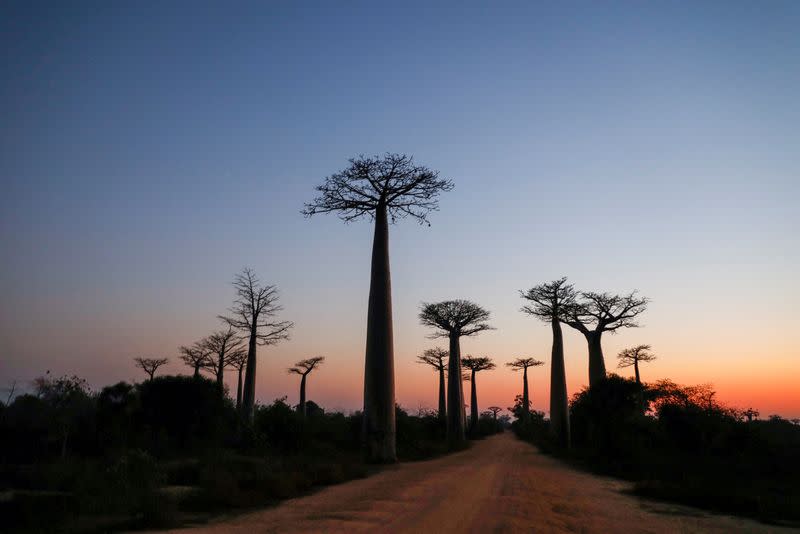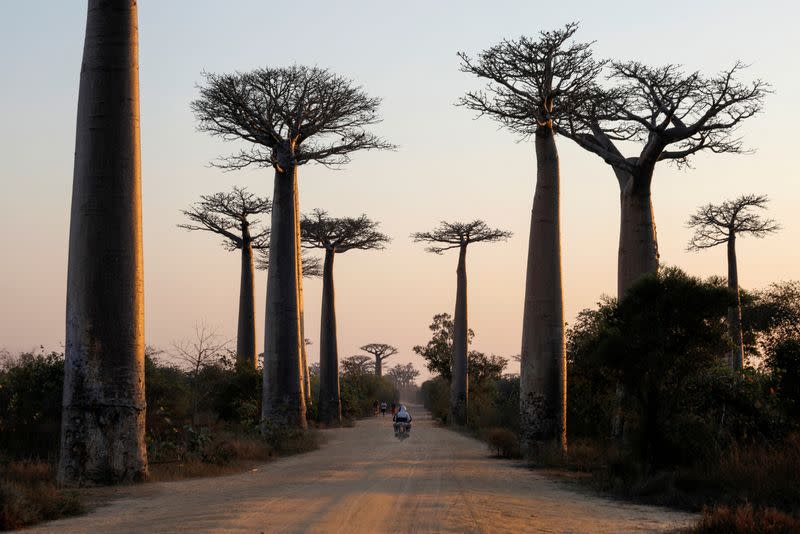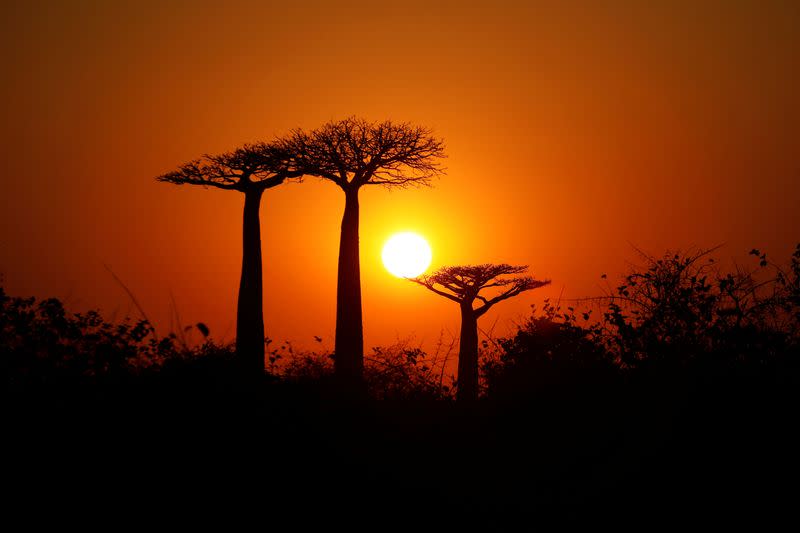Study reveals history and oceanic voyages of remarkable baobab tree
By Will Dunham
(Reuters) - The baobab tree is a distinctive sight on the landscape. When its contorted branches are leafless during the dry season, they resemble jumbled roots emanating from a thick trunk, making it appear as if someone had yanked the tree from the ground, flipped it on its head and jammed it back into the earth.
Hence one of its nicknames: the "upside down tree." But the origins and history of the baobab - found in Madagascar and parts of Africa and Australia - have been something of a mystery. A new study resolves this, based on genomic analyses of all eight recognized species as well as ecological and geological data, so the baobab's story can finally be told.
The baobab lineage originated in Madagascar roughly 21 million years ago and reached Africa and Australia sometime in the past 12 million years, the researchers found. Madagascar, an island off Africa's southeastern coast, is a biodiversity hot spot and home to an assemblage of unusual flora and fauna.
Two baobab lineages went extinct in Madagascar, but not before establishing themselves elsewhere, one in Africa and one in Australia, the study showed.
The tale of how a tree crossed the Indian Ocean to put down roots in two distant destinations is dramatic. It appears that baobab seed pods floated from Madagascar to mainland Africa, located about 250 miles (400 km) to the west, and to Australia, situated more than 4,000 miles (nearly 7,000 km) to the east.
"The plants almost certainly got to Africa and Australia floating on or with vegetation rafts," said botanist Tao Wan of the Wuhan Botanical Garden in China, one of the authors of the study published on Wednesday in the journal Nature.
"The long-distance dispersal to Australia was probably facilitated by the Indian Ocean gyre, which is an oceanic current that circulates south past Madagascar, where it probably picked up baobab seed pods, before the current swings east to Australia, where it delivered the pods. The current then circulates north and then swings west past Mauritius and to Africa once again, where it completes the gyre," Wan added.
Baobabs, found in dry savannah habitats, provide food, shelter and nesting sites for wildlife, from bees to birds to various mammals. Their fruits also provide valuable nutrients and medicines for people, and baobab leaves are edible, too.
The trees produce large, night-flowering, sweet-smelling flowers whose sugary nectar attracts nocturnal pollinators including fruit bats and hawk moths, as well as two types of primates, lemurs in Madagascar and bush babies in Africa.
"They can reach huge dimensions - depending on the species - in both height and diameter, and are reported to live for thousands of years. The root systems are also massive, which are considered to play an important ecological role, helping to slow down soil erosion and enabling nutrient recycling," said plant geneticist and study co-author Ilia Leitch of the Royal Botanic Gardens Kew in London.
"The trees have astonishing and distinctive growth forms, some species with massive trunks that are hollow cylinders of low-quality wood ramified with many water-filled living cells. Some of the largest and oldest trees in Australia have been estimated to hold more than 100,000 liters (26,400 gallons) of water," said botanist and study co-author Andrew Leitch of Queen Mary University of London.
They represent a water source for local people during the dry season. But Africa's baobabs are vulnerable to elephant damage because the animals sometimes gouge the tree trunks with their tusks to get water.
The tree has become part of folklore.
"The people of Kafue in Africa have a legend that four beautiful maidens used a tree for shade and the tree fell in love with them," Wan said. "But the maidens fell in love with humans, so the tree got jealous and imprisoned them in its trunk, where they remain to this day. People say you can hear them still, I guess because the hollow center acts as some sort of sound chamber in some trees."
(Reporting by Will Dunham in Washington, Editing by Rosalba O'Brien)



